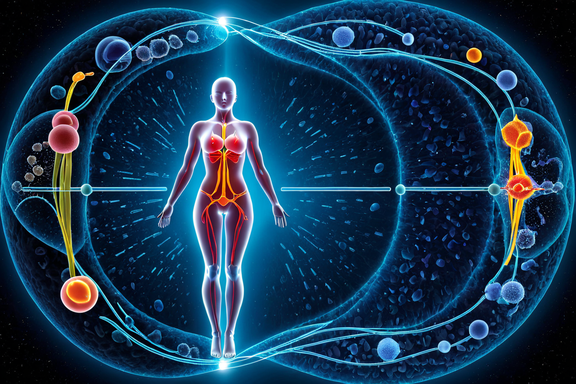Mastering Homeostasis: Understanding the Body's Balance and Essential Regulatory Mechanism
A fundamental biological phenomenon known as homeostasis describes the body's capacity to maintain a stable internal milieu despite changeable external conditions. It is quite remarkable that without the use of tools or apparatus, we can remain warm in cold weather and cool in hot weather. Additionally, it is noteworthy how the body defends against infections, maintains normal blood sugar levels, and regulates brain chemicals to maintain healthy moods. A substantial and crucial domain of scientific and medical understanding, homeostasis encompasses a number of contentious and debatable concepts. The current state of knowledge is as follows.
Comprehending Homeostasis: Attaining Equilibrium
Homeostasis is the capacity of the body to maintain internal conditions (such as body temperature) within a limited range, despite changes in the environment. Homeostasis is a complex interplay of physiological processes that regulate variables to a certain degree of optimality.
The following are mechanisms of homeostasis:
Feedback Loops: In order to maintain its "comfort zone" and moderate alterations, the body employs both positive and negative feedback. By opposing changes (such as an increase in body temperature), negative feedback restores the system to its initial state. On the contrary, positive feedback, such as the release of cytokines in response to "sickness behavior," serves to stimulate and temporarily magnify modifications.
Sensor-receptor mechanisms involve specialized cells or receptors that detect changes in diverse physiological variables. Subsequently, these signals are transmitted to the appropriate control centers within the body via signaling pathways.
Integrators, such as the endocrine system or the brain, interpret inputs prior to activating effectors, which may consist of muscles or glands.
Important homeostatic factors:
The body regulates its temperature through various mechanisms, such as perspiration, trembling, vasoconstriction and dilation of blood vessels, and so forth.
Blood Sugar Levels: Blood glucose levels are regulated by hormones such as insulin and glucagon.
Central and peripheral baroreceptors monitor blood pressure and transmit signals to regulate heart rate and blood vessel dilation/constriction in order to maintain normal blood pressure.
The Value of Homeostasis:
Cellular function is optimized when cells are provided with the essential conditions, which is ensured by homeostasis.
Organ systems operate in an efficient manner when internal conditions are in equilibrium.
Preservation of Health: Homeostasis serves to avert severe variations that have the potential to result in harm or injury.
Interference with Homeostasis:
- Disorders arise from the malfunction of homeostatic mechanisms and manifest as conditions such as diabetes, hypertension, and fever.
- External factors, including extreme weather or heat, have the potential to disrupt the body's equilibrium.
- Both adaptation and homeostasis:
- Through processes such as high-altitude acclimatization, organisms are capable of gradually adjusting to environmental changes.
- Circadian Rhythms: The internal clock of the body aids in the predictable regulation of physiological functions.
- Ensuring Balance for the Purposes of Health and Well-being
Homeostasis is, in essence, the physiological regulation of the organism. It operates on the basis of this force to preserve its internal mechanisms. The body maintains the stability of its components through feedback mechanisms and physiological responses. It also regulates its affairs continuously to ensure that organ systems and cells remain in an optimal state to optimize their functions. Not only is homeostasis knowledge intricate, but it also increases one's admiration for the body.
Other related questions:
- What is osmosis? Its Definition, Mechanism, and Biological Significance
- What is cell? Their Structure, Functions, and Importance in Biology
- What is mass? Its Definition, Measurement, and Role in Physics
- What is fascism? Its Origins, Characteristics, and Historical Impact
- What is a simp? Its Meaning, Origin, and Cultural Implications

